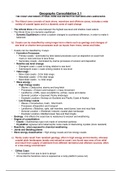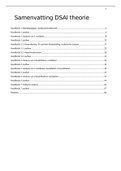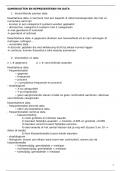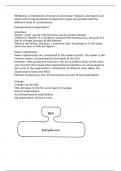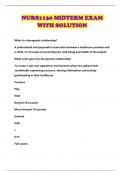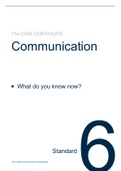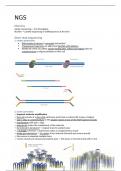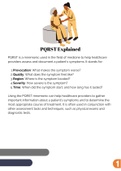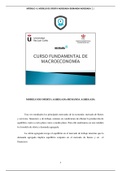THE COAST AND WIDER LITTORAL ZONE HAS DISTINCTIVE FEATURES AND LANDSCAPES
a) The littoral zone consists of back shore, nearshore and offshore zones, includes a wide
variety of coastal types and is a dynamic zone of rapid change
- The Littoral Zone = the area between the highest sea level and shallow coast waters
- The littoral Zone is in dynamic equilibrium
- Dynamic Equilibrium = when a system changed to counteract difference, in order to make it
balanced
b) Coasts can be classified by using longer term criteria such as geology and changes of
sea level or shorter term processes such as inputs from rivers, waves and tides.
- Coasts can be classified by 4 ways :
- Formation Processes:
- Primary coasts - dominated by land based processes such as deposition at coast from
rivers or new land due to lava flows
- Secondary coasts - dominated by marine processes of erosion and deposition
- Relative sea level change:
- Emergent coast = coast is rising relative to sea level
- Submergent coast = coast sinking relative to sea level
- Tidal range :
- Micro tidal coasts - 0-2m tidal range
- Mesotidal coasts - 2-4m tidal range
- Macrotidal coasts - 4+ tidal range
- Wave energy :
- High Energy coasts
- Waves = Destructive, stormy and long fetch
- Processes = Erosion and transport = mass movement
- Landforms = Cliffs, wave cut platforms, arches, caves and stacks
- General Location = Exposed, Rocky landscape
- Example Location= Norway an Scotland and Pacific Coast of Alaska
- Low Energy coasts
- Waves = Constructive, Calm , Short fetch
- Processes =Deposition and transport
- Landforms = Beaches, spits, salt marshes, sand dunes, bars and mud flats
- General Location = Sheltered, lowland, coastal plain landscape
- Example Location= Mediterranean Sea and East Anglia
- Geology - this affects the coast due to resistance to erosion and weathering
- Degree of consolidation
- Clastic = Sedimentary type rock made of cemented particles
- Crystalline =Igneous and metamorphic rocks made of interlocking crystals (more resistant)
- Reactivity - when exposed to chemical weathering
- Joints and Bedding planes
- Wave energy classification - High energy coasts and low energy coasts
c) Rocky coats result from resistant geology, often in high energy environments, whereas
coastal plain landscapes (sandy and estuarine coast ) are found near ares of low relief
and result from supply of sediment from different terrestrial and offshore sources, often
in a low energy environment
• Cliffed Coast
- The transition from sea to land is abrupt
- At low tide the foreshore zone is exposed as a rocky platform (wave cut)
, - Example : Chalk Cliffs at Flamborough Head in Yorkshire
- Sandy Coastline
- sandy dunes fringe many coastal plains
- At high tide sandy beach is inundated (flooded) but vegetated dunes are not
- Dune vegetation stabilises coast + presents erosion
• Estuarine coastline
• Found at mouth of river
• They have extensive mud flats, exposed at low tide but flooded at high tide
• Closer to the back shore the mud flats are vegetated = salt marsh
• this coastline gradually transitions from land to sea
• Rocky (or cliffed) coastline
• have cliffs varying in heigh
• cliffs form from rock but are varying resistance
• Coastal plains ( can be called alluvial coasts )
• lang gradually slopes towards the sea with an area of deposited sediment
• it has sand dunes, mud flats

